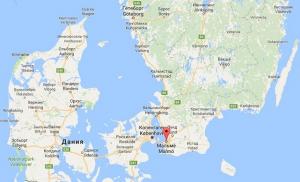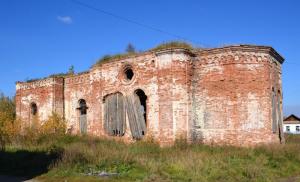Lonely Mountain. Erebor (Lonely Mountain) Erebor on the map of Middle-earth
The Lonely Mountain is located in the northeastern part of Middle-earth, south of the eastern end of the Gray Mountains (Ered Mithryn) and west of the Iron Hills mountain system; thus, on all sides of the world, Erebor is surrounded by treeless steppes (which influenced the formation of the toponym - the Lonely Mountain).
South of Erebor, several tens of kilometers away, is Long Lake, formed at the confluence of the Forest River (flowing through Mirkwood and the lands of the elven kingdom) and the Running River (Keldwin), originating on the slopes of the Lonely Mountain and then emerging from the lake and flowing into the inland sea of Rhun.
The huge Main Gate was located on the southern side of the mountain, opening into the valley between two huge spurs. At the end of the southwestern spur there were Crow Heights and a guard post. The Running River flowed out from under the Lonely Mountain. Its mouth at the Main Gate formed a waterfall. Down in the valley was the city-state of Dale, where the People lived.
Inside, from the Main Gate along the river there was a wide winding road leading into the mountain. Nearby was the so-called Great Hall of Thror, where celebrations and meetings were held. The Lonely Mountain had many halls, chambers, passages and staircases. In the Lower Halls at the foot of the mountain there was a spacious chamber, the so-called Great Hall of Thrain. A secret passage led from it to a secret door on the mountainside. The side door was invisible from the outside except on Durin's Day, when the light of the setting sun illuminated the keyhole.
Story
The kingdom was founded in 999 of the Third Age by Thrain I the Old, the son of Nain the First, who was killed by a Balrog after the exodus of the Dwarves from Khazad-Dum, captured by the Orcs of the Misty Mountains. In Erebor, Thrain himself found a precious Stone similar to the Silmarils - the Arkenstone, or the Heart of the Mountain. The Dwarf Kingdom of Erebor began to be called the Undermountain Kingdom, and its ruler - the Undermountain King or the King-under-the-Mountain. The dwarves of the Lonely Mountain began to work in a new place and, having discovered deposits of gold and other precious metals, led their kingdom to prosperity.
In 2210, Thrain the Old's son Thorin I left the Lonely Mountain and went in search of wealth to the Gray Mountains. Many of the dwarves gathered to live in these mountains. But this area was under the rule of dragons, who began to attack them, and after the death of Dain I, in 2590, the dwarves fled. Some of them went to the Iron Hills, others returned to the Lonely Mountain, led by Thrór - a descendant of Thrain I. Thrór restored the Kingdom under the Mountain and installed the Arkenstone in the Great Hall on the throne of his ancestor. The Dwarves forged weapons and armor and created incredible things of amazing beauty, and their fame spread throughout Middle-earth. They expanded the halls of the Lonely Mountain and discovered as yet unexplored deposits of gold and precious stones. They traded with the Dwarves of the Iron Hills, where Thror's brother Gror created his own kingdom, and the people of Dale.
After the Battle of the Five Armies, in which Thorin Oakenshield fell, the Dwarves returned to Erebor, and its new king - Dain II Ironfoot, lord of the Iron Hills, who was Gror's grandson - revived the wealth and glory of the Undermountain Kingdom.
The Lonely Mountain was high by itself standing mountain in the north of the Wild Earth. It was located near the edge of Mirkwood, approximately 50 miles south of the Gray Mountains and 125 miles west of the Iron Hills.
The huge Main Gate was located on the southern side of the mountain, opening into the valley between two huge spurs. At the end of the southwestern spur there was Crow Height and a guard post. The Running River flowed out from under the Lonely Mountain. Its mouth at the Main Gate formed a waterfall. Down in the valley was the city of Dale, where the People lived.
Inside, from the Main Gate along the river there was a wide winding road leading into the mountain. Nearby was the Great Hall of Thror, where celebrations and meetings were held. The Lonely Mountain had many halls, chambers, passages and staircases. In the Lower Halls, at the foot of the mountain, was a spacious chamber called the Great Hall of Thrain. A secret passage led from it to a secret door on the mountainside. The side door was invisible from the outside except on Durin's Day, when the light of the setting sun illuminated the keyhole.
The Lonely Mountain was the state of the Kings under the Mountain. The first King was Thrain I, who came to the Lonely Mountain in 1999 of the Third Age after escaping from the Balrog of Khazad-dum. In the underground mines, Thrain extracted an amazing stone called Arkenstone. The dwarves of the Lonely Mountain began to work in a new place and led their kingdom to prosperity.
When the People of Lake Town and the Wood Elves came to the Lonely Mountain, hoping to take the treasure, they discovered that the Dwarves were still alive. The dwarves barricaded themselves in the Lonely Mountain and refused to give up even part of the treasure. But then an army of Orcs and Wargs appeared, and the Dwarves, together with the Elves and Men, fought and won the Battle of the Five Armies in the southern valley between the spurs of the Lonely Mountain. Thorin was killed in battle. He was buried deep under the Lonely Mountain. The Arkenstone was placed on his grave as well as his elven sword Orcrist, which later warned by its glow that enemies were approaching the Lonely Mountain.
Ten Dwarves who survived the battle settled in the Lonely Mountain. Thorin's kinsman Dain Ironfoot became King under the Mountain, and many Dwarves from the Iron Hills and other places moved there.
The Dwarves of the Lonely Mountain began to prosper again, trading with the Men of Lake-town and the restored Dale. They forged good weapons and armor. They were not as skilled in working with metal as their ancestors, but they were superior to them in construction and mining. They built paved roads and vaulted halls inside the Lonely Mountain, and towers and terraces on its slopes.
Around 3017, a messenger from Mordor arrived in the Lonely Mountain, seeking news about Bilbo Baggins and the Ring. Dain refused to speak to the messenger and sent a warning to Bilbo in Rivendell.
In March 3019, the Lonely Mountain and Dale were attacked by the Easterlings, allies of Sauron. Dain and the King of Dale. The Lonely Mountain remained an independent state under the protection of Aragorn and his descendants.
Etymology
Lonely Mountain:
Lonely Mountain was called that because it stood alone and was not part of a mountain range.
Erebor:
In Sindarin it was called Erebor. The word "Erebor" means "Lonely Mountain" from here- "to be alone" ( ereb- "lonely, isolated") and oro- “upper, high, up.”
The Dwarf State was also called Kingdom under the Mountain.
Sources
- The Hobbit: "An Unexpected Party," p. 28-35, "On the Doorstep," passim; "Inside Information," passim; "Not at Home," passim; "The Gathering of the Clouds," p. 268-73; "The Clouds Burst," p. 293-98; "The Return Journey," p. 303-4; "The Last Stage," p. 316-17
- The Fellowship of the Ring: "Many Meetings," p. 240-42; "The Council of Elrond," p. 253-55
- Appendix A of The Lord of the Rings: "Durin's Folk," p. 353-54, 359-60
- Appendix B of The Lord of the Rings: "The Tale of Years," p. 375-76
- The History of Middle-earth, vol. V, The Lost Road and Other Writings: "The Etymologies," entries for ERE and ORO
E Rebor is also known as the Lonely Mountain - the greatest Dwarven kingdom middle earth. In distant times gnomes from the Durin family discovered valuable minerals here. Soon a colony was founded here and a road was built connecting the mountain with Iron Hills and even to the distant lands of the Dwarves in the west, such as Blue Mountains.
The Kingdom of Erebor flourished in the Second Age after the fall of the ancient Dwarf kingdom Moria due to the awakening of the demon Balroga. The surviving dwarves, led by Thrain I, proceeded to the Lonely Mountain and the colony became the ancestral home of the king under the mountain. Erebor became densely populated and prosperous, and the Dwarves became very rich, amassing many treasures and gold, including the legendary gem Arkenstone. Thrain I made the Arkenstone the symbol of his reign, and his sons and great-grandsons were to carry on this tradition.
After some time, the mountain was abandoned for several centuries, and the gnomes went to the Gray Mountains. However, there they survived attacks from dragons that still lived in those mountains. The war with them was very costly, and then the dwarves left the Gray Mountains. Some of them led by Trora returned back to Erebor.
|
It is interesting that at the very beginning of the film “The Hobbit: An Unexpected Journey”, in the scene of the dwarves fleeing Erebor, you can see the director |
The Lonely Mountain is located in the northeastern part of Middle-earth, south of the eastern end of the Gray Mountains (Ered Mithryn) and west of the Iron Hills mountain system; thus, on all sides of the world, Erebor is surrounded by treeless steppes (which influenced the formation of the toponym - the Lonely Mountain).
South of Erebor, several tens of kilometers away, is the Long Lake, formed at the confluence of the Forest River (flowing through Mirkwood and the lands of the elven kingdom) and the Running River (Keldwin), originating on the slopes of the Lonely Mountain and then emerging from the lake and flowing into the inland sea of Rhun.
The huge Main Gate was located on the southern side of the mountain, opening into the valley between two huge spurs. At the end of the southwestern spur there were Crow Heights and a guard post. The Running River flowed out from under the Lonely Mountain. Its mouth at the Main Gate formed a waterfall. Down in the valley was the city-state of Dale, where the People lived.
Inside, from the Main Gate along the river there was a wide winding road leading into the mountain. Nearby was the so-called Great Hall of Thror, where celebrations and meetings were held. The Lonely Mountain had many halls, chambers, passages and staircases. In the Lower Halls at the foot of the mountain there was a spacious chamber, the so-called Great Hall of Thrain. A secret passage led from it to a secret door on the mountainside. The side door was invisible from the outside except on Durin's Day, when the light of the setting sun illuminated the keyhole.
Story
The kingdom was founded in 999 of the Third Age by Thrain I the Old, son of Nain the First, after the exodus of the Dwarves from Moria. In Erebor, Thrain himself found a precious Stone similar to the Silmarils - the Arkenstone, or the Heart of the Mountain. The Dwarf Kingdom of Erebor began to be called the Undermountain Kingdom, and its ruler - the Undermountain King or the King-under-the-Mountain. The dwarves of the Lonely Mountain began to work in a new place and, having discovered deposits of gold and other precious metals, led their kingdom to prosperity.
In 2210, Thrain the Old's son Thorin I left the Lonely Mountain and went in search of wealth to the Gray Mountains. Many of the dwarves gathered to live in these mountains. But this area was under the rule of dragons, and in 2590 the dwarves fled. Some of them went to the Iron Hills, others returned to the Lonely Mountain, led by Thror - a descendant of Thrain I. Thror restored the Kingdom under the Mountain and installed the Arkenstone in the Great Hall on the throne of his ancestor. The Dwarves forged weapons and armor and created incredible things of amazing beauty, and their fame spread throughout Middle-earth. They expanded the halls of the Lonely Mountain and discovered as yet unexplored deposits of gold and precious stones. They traded with the Dwarves of the Iron Hills, where Thror's brother Gror created his own kingdom, and the people of Dale.
Write a review about the article "Erebor"
Links
- at Tolkien Gateway
|
||||||||||||||||||||||||||
Excerpt describing Erebor
The hunters fought off the fox and stood on foot for a long time, without rushing. Near them on chumburs stood horses with their saddles and dogs lay. The hunters waved their hands and did something with the fox. From there the sound of a horn was heard - the agreed signal of a fight.“It’s the Ilaginsky hunter who is rebelling with our Ivan,” said the eager Nikolai.
Nikolai sent the groom to call his sister and Petya to him and walked at a walk to the place where the riders were collecting the hounds. Several hunters galloped to the scene of the fight.
Nikolai got off his horse and stopped next to the hounds with Natasha and Petya riding up, waiting for information about how the matter would end. A fighting hunter with a fox in torokas rode out from behind the edge of the forest and approached the young master. He took off his hat from afar and tried to speak respectfully; but he was pale, out of breath, and his face was angry. One of his eyes was black, but he probably didn’t know it.
-What did you have there? – Nikolai asked.
- Of course, he will poison from under our hounds! And my mousey bitch caught it. Go and sue! Enough for the fox! I'll give him a ride as a fox. Here she is, in Toroki. Do you want this?...” said the hunter, pointing to the dagger and probably imagining that he was still talking to his enemy.
Nikolai, without talking to the hunter, asked his sister and Petya to wait for him and went to the place where this hostile Ilaginskaya hunt was.
The victorious hunter rode into the crowd of hunters and there, surrounded by sympathetic curious people, told his exploit.
The fact was that Ilagin, with whom the Rostovs were in a quarrel and trial, was hunting in places that, according to custom, belonged to the Rostovs, and now, as if on purpose, he ordered to drive up to the island where the Rostovs were hunting, and allowed him to poison his hunter from under other people’s hounds.
Nikolai never saw Ilagin, but as always, in his judgments and feelings, not knowing the middle, according to rumors about the violence and willfulness of this landowner, he hated him with all his soul and considered him his worst enemy. He now rode towards him, embittered and agitated, tightly clutching the arapnik in his hand, in full readiness for the most decisive and dangerous actions against his enemy.
As soon as he left the ledge of the forest, he saw a fat gentleman in a beaver cap on a beautiful black horse, accompanied by two stirrups, moving towards him.
Instead of an enemy, Nikolai found in Ilagin a personable, courteous gentleman, who especially wanted to get to know the young count. Approaching Rostov, Ilagin lifted his beaver cap and said that he was very sorry for what happened; that he orders to punish the hunter who allowed himself to poison other people's dogs, asks the count to be acquainted and offers him his places for hunting.
Natasha, afraid that her brother would do something terrible, rode not far behind him in excitement. Seeing that the enemies were bowing in a friendly manner, she drove up to them. Ilagin raised his beaver cap even higher in front of Natasha and, smiling pleasantly, said that the Countess represented Diana both by her passion for hunting and by her beauty, about which he had heard a lot.
Ilagin, in order to make amends for the guilt of his hunter, urgently asked Rostov to go to his eel, which was a mile away, which he kept for himself and in which, according to him, there were hares. Nikolai agreed, and the hunt, having doubled in size, moved on.
It was necessary to walk to the Ilaginsky eel through fields. The hunters straightened out. The gentlemen rode together. Uncle, Rostov, Ilagin secretly glanced at other people's dogs, trying so that others would not notice, and anxiously looked for rivals for their dogs among these dogs.
Rostov was especially struck by her beauty by a small pure-dog, narrow, but with steel muscles, a thin muzzle and bulging black eyes, a red-spotted bitch in Ilagin’s pack. He had heard about the agility of the Ilagin dogs, and in this beautiful bitch he saw his Milka’s rival.
In the middle of a sedate conversation about this year's harvest, which Ilagin started, Nikolai pointed out to him his red-spotted bitch.
- This bitch is good! – he said in a casual tone. - Rezva?
- This? Yes, this is a good dog, it catches,” Ilagin said in an indifferent voice about his red-spotted Erza, for which a year ago he gave his neighbor three families of servants. “So you, Count, don’t boast about threshing?” – he continued the conversation he had started. And considering it polite to repay the young count in kind, Ilagin examined his dogs and chose Milka, who caught his eye with her width.
- This black-spotted one is good - okay! - he said.
“Yes, nothing, he’s jumping,” answered Nikolai. “If only a seasoned hare ran into the field, I would show you what kind of dog this is!” he thought, and turning to the stirrup, he said that he would give a ruble to anyone who suspected, that is, found a lying hare.
“I don’t understand,” Ilagin continued, “how other hunters are envious of the beast and the dogs.” I'll tell you about myself, Count. It makes me happy, you know, to take a ride; Now you’ll get together with such a company... what’s better (he again took off his beaver cap in front of Natasha); and this is to count the skins, how many I brought - I don’t care!
- Well, yes.
- Or so that I would be offended that someone else’s dog catches it, and not mine - I just want to admire the baiting, right, Count? Then I judge...
“Atu - him,” a drawn-out cry was heard at that time from one of the stopped Greyhounds. He stood on a half-mound of stubble, raising his arapnik, and once again repeated in a drawn-out manner: “A—tu—him!” (This sound and the raised arapnik meant that he saw a hare lying in front of him.)













